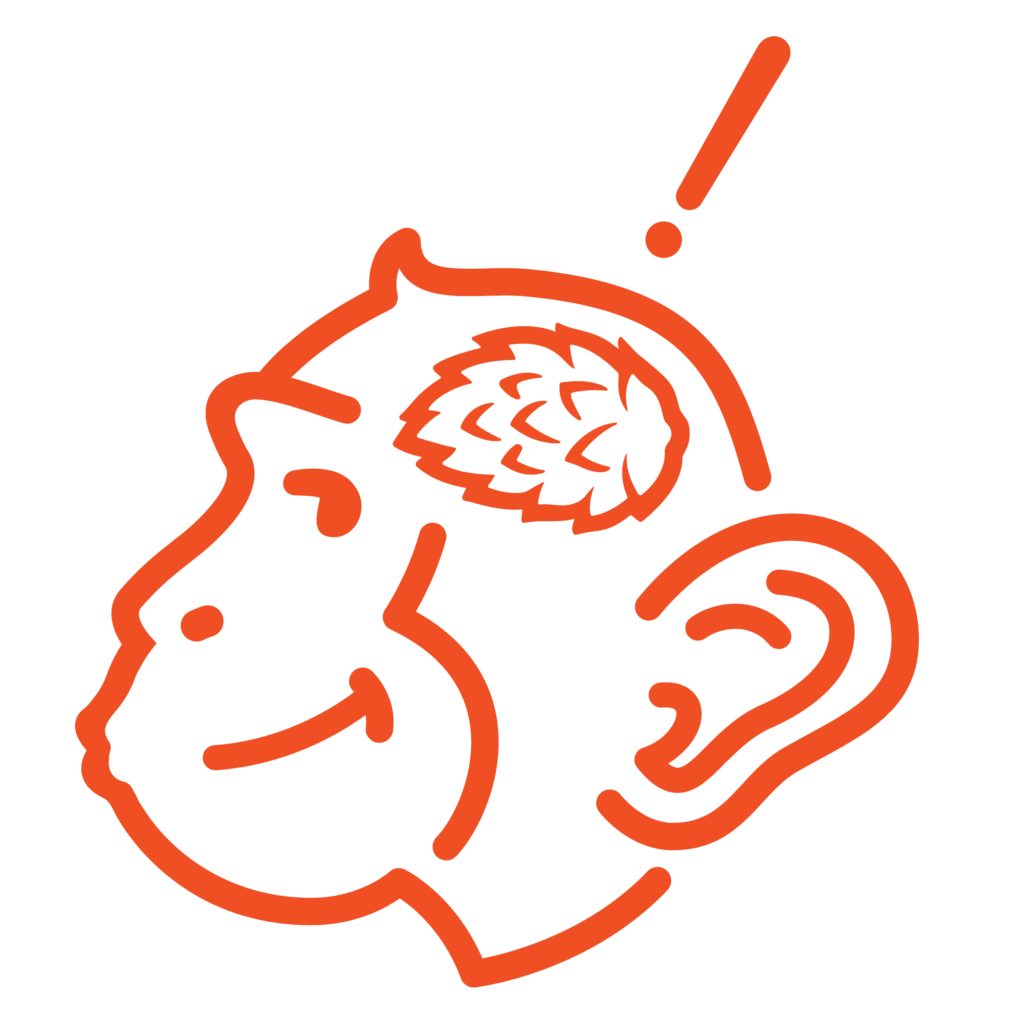Beer Education
IPA Beer Explained: Uncovering the Rich Flavours and History Behind this Iconic Beer Style
IPA Beer Explained: Step into the world of craft beer and you’ll likely come across one name that stands out among the rest: IPA. Short for India Pale Ale, this iconic beer style has taken the brewing scene by storm, captivating beer enthusiasts with its bold flavours and rich history. But what exactly is an IPA, and what sets it apart from other beers?

IPA originated in the 18th century when British brewers needed a brew that could withstand the long journey from England to India. To prevent spoilage, they loaded the beer with extra hops, adding bitterness and acting as a natural preservative. This hop-forward style soon gained popularity not only for its longevity but also for its distinct hoppy flavours.
Today, IPAs bcontinue to be beloved by beer enthusiasts around the world. From the classic West Coast IPA with its piney and citrusy notes to the hazy New England IPA with its juicy and tropical flavours, there’s an IPA to suit every palate.
In this article, we’ll delve into the captivating world of IPAs, uncovering their rich flavours and exploring the fascinating history behind this legendary beer style. So grab a cold one, and let’s dive into the wonderful world of IPAs.
Table of Contents
What is an IPA?
An IPA, or India Pale Ale, is a beer style characterized by its strong hop flavour, higher alcohol content, and distinct bitterness. The style originated in the 18th century when British brewers needed a beer that could withstand the long journey from England to India. To prevent spoilage during the months-long voyage, they loaded the beer with extra hops, which acted as a natural preservative. This hop-forward style soon gained popularity not only for its longevity but also for its unique flavours.
IPAs are known for their bold and complex hop profiles, which can range from floral and citrusy to piney and resinous. The bitterness of an IPA comes from the hops, which balance out the sweetness of the malt. This combination of hops and malt creates a harmonious flavour profile that sets IPAs apart from other beer styles.
The history of IPA Beer
The history of IPA is steeped in legend and lore, making it a fascinating topic for beer enthusiasts. The story goes that in the late 18th century, British brewers were struggling to produce beer that could survive the long journey to India without spoiling. Traditional English ales would spoil during the voyage, leaving the troops stationed in India without their beloved beer.
To solve this problem, brewers began experimenting with adding extra hops to the beer. Hops act as a natural preservative, preventing the growth of bacteria and spoilage. By increasing the hop content, brewers were able to create a beer that could withstand the journey to India.
The first recorded mention of India Pale Ale dates back to 1801 when a London brewer named Hodgson started exporting a pale ale to India. This beer, now known as IPA, quickly gained popularity among British troops stationed in India. It was not long before other brewers started producing their own versions of IPA, and the style began to spread across the globe.
-
 Cheeky Monkey Imperial IPA$27.50 – $84.50 inc. GST
Cheeky Monkey Imperial IPA$27.50 – $84.50 inc. GST -
 Cheeky Monkey Imperial IPA – Pack (16)$84.50 inc. GST
Cheeky Monkey Imperial IPA – Pack (16)$84.50 inc. GST -
 Cheeky Monkey Imperial IPA – Pack (4)$27.50 inc. GST
Cheeky Monkey Imperial IPA – Pack (4)$27.50 inc. GST
Characteristics of IPA
IPA is known for its distinct characteristics that set it apart from other beer styles. One of the most notable features of IPA is its hop-forward flavour profile. IPAs have a higher hop content compared to other beer styles, which contributes to their bold and bitter taste. The hops used in IPAs can vary, resulting in different flavour profiles ranging from floral and citrusy to piney and resinous.
In addition to its hoppy flavour, IPA also has a higher alcohol content compared to other beers. This higher alcohol content gives IPAs a stronger and more robust character. The alcohol content of IPAs typically ranges from 6% to 7.5% or higher, although there are also session IPAs with lower alcohol content for those who prefer a lighter beer.
Another characteristic of IPA is its color. IPAs are typically golden to amber in color, with some variations leaning towards a more orange hue. The malt used in IPAs contributes to their color, providing a rich backdrop for the hop flavours to shine.
The different types of IPA
Over the years, different variations of IPA have emerged, each with its own unique characteristics and flavour profiles. Here are some of the most popular types of IPA:
- West Coast IPA: The West Coast IPA is known for its piney, resinous and citrusy hop flavours. It has strong bitterness and a dry finish, making it a favourite among hopheads.
- Hazy IPA: The Hazy IPA (also known as NEIPA/New England IPA), is characterised by its juicy and tropical fruit flavours. It has a cloudy appearance and a smooth, creamy mouthfeel.
- Imperial IPA: The Imperial IPA, also known as Double IPA, is a stronger and more intense version of the traditional IPA. It has a higher alcohol content and an even more pronounced hop flavour.
- Session IPA: The Session IPA is a lighter and more sessionable version of the IPA. It has lower alcohol content and a milder hop flavour, making it a great choice for those who prefer a lighter beer.
These are just a few examples of the many variations of IPA available today. Each type of IPA offers a unique flavour experience, allowing beer enthusiasts to explore the diverse world of hop-forward beers.
IPA brewing process
The brewing process for IPA is similar to that of other beer styles, with a few key differences. The main difference lies in the hop addition, which is the defining characteristic of IPA. Here’s a brief overview of the IPA brewing process:
- Mashing: The brewing process begins with mashing, where malted grains are mixed with hot water to extract sugars. The grains used in IPA can vary, but typically include pale malt and specialty malts for added complexity.
- Boiling: After mashing, the liquid, known as wort, is boiled. During the boil, hops are added at different intervals to achieve the desired bitterness and hop flavour. The hops used in IPA can vary, but popular choices include Cascade, Citra, and Simcoe.
- Fermentation: Once the boil is complete, the wort is cooled and transferred to a fermentation vessel. Yeast is added to the wort, which converts the sugars into alcohol and carbon dioxide. The fermentation process typically takes several days to a few weeks, depending on the desired flavour profile.
- Dry hopping: After fermentation, some IPAs undergo a process called dry hopping. Dry hopping involves adding hops directly to the fermentation vessel, which enhances the hop aroma and flavour without adding additional bitterness. This step is crucial in creating the signature hop-forward character of IPA.
- Carbonation and packaging: After fermentation and dry hopping, the beer is carbonated and packaged. IPAs can be packaged in bottles, cans, or kegs, ready to be enjoyed by beer lovers around the world.

IPA food pairings
The bold and flavourful nature of IPA makes it a versatile beer when it comes to food pairings. Here are some popular food pairings that complement the hoppy flavours of IPA:
- Spicy foods: The bitterness of IPA helps to cut through the heat of spicy foods, making it an excellent choice for pairing with dishes like curry, Mexican cuisine, and buffalo wings.
- Grilled meats: The robust flavours of IPA pair well with grilled meats, such as burgers, steak, and barbecue. The hop bitterness helps to balance out the richness of the meat, creating a harmonious combination.
- Strong cheeses: IPAs can stand up to strong and pungent cheeses, making them an ideal companion for cheese boards. Pair IPA with sharp cheddar, blue cheese, or aged gouda for a flavour-packed experience.
- Citrusy dishes: The citrusy hop flavours of some IPAs complement dishes with citrus-based sauces or marinades. Try pairing IPA with citrus-glazed salmon, lemon chicken, or orange-infused shrimp for a refreshing and flavourful combination.
These are just a few examples of food pairings that work well with IPA. The hoppy flavours and bitterness of IPA can add depth and complexity to a wide range of dishes, making it a favorite beer for food enthusiasts.
The popularity of IPA
The popularity of IPA has skyrocketed in recent years, with craft beer enthusiasts embracing this iconic beer style. The rise of the craft beer movement and the growing interest in unique and flavourful beers have contributed to the surge in IPA’s popularity.
IPAs offer a wide range of flavours and variations, allowing beer lovers to explore different hop profiles and find their preferred style. The bold and assertive nature of IPA appeals to those who enjoy complex and intense flavours, making it a favorite among beer connoisseurs.
In addition to its flavour profile, IPA has also gained popularity due to its versatility. It pairs well with a variety of foods, making it a go-to choice for food and beer pairings. The hop-forward character of IPA can complement a wide range of dishes, enhancing the overall dining experience.
IPA festivals and events
The popularity of IPA has led to the emergence of IPA festivals and events around the world. These events celebrate the rich flavours and diverse variations of IPA, bringing together beer enthusiasts and brewers for a celebration of this iconic beer style.
IPA festivals often feature a wide selection of IPAs from different breweries, allowing attendees to sample a variety of flavours and styles. From West Coast IPAs to New England IPAs, these festivals showcase the best of what IPA has to offer.
In addition to beer tastings, IPA festivals may also include educational seminars, food pairings, live music, and other entertainment. These events provide a platform for brewers to showcase their IPAs and for beer lovers to discover new and exciting flavours.
Some notable IPA festivals include the Great American Beer Festival in the United States, the Craft Beer Rising festival in the United Kingdom, and the IPA Day celebration, which takes place on the first Thursday of August each year.
-
 Cheeky Monkey Imperial IPA$27.50 – $84.50 inc. GST
Cheeky Monkey Imperial IPA$27.50 – $84.50 inc. GST -
 Cheeky Monkey Imperial IPA – Pack (16)$84.50 inc. GST
Cheeky Monkey Imperial IPA – Pack (16)$84.50 inc. GST -
 Cheeky Monkey Imperial IPA – Pack (4)$27.50 inc. GST
Cheeky Monkey Imperial IPA – Pack (4)$27.50 inc. GST
IPA recipes and home brewing tips
For those who are passionate about beer and want to try their hand at brewing IPA, there are plenty of resources available to get started. Many breweries and homebrewers are willing to share their recipes and tips for brewing IPA.
When it comes to brewing IPA, it’s important to pay attention to the hop selection and timing. Different hop varieties can impart different flavours and aromas, so experimenting with different combinations can lead to unique and interesting results.
Dry hopping is also an essential step in brewing IPA. Adding hops directly to the fermentation vessel during the dry hopping process enhances the hop aroma and flavour, contributing to the overall character of the beer.
For homebrewers looking to brew their own IPA, there are numerous IPA recipes available online and in brewing books. These recipes provide a starting point for creating your own IPA, allowing you to tailor the flavours and characteristics to your liking.
IPA Conclusion
IPA, short for India Pale Ale, is a beer style that has captured the hearts of beer enthusiasts around the world. From its origins in the 18th century as a beer brewed for long journeys to India, IPA has evolved into a diverse and beloved style with a wide range of flavours and variations.
Whether you prefer the piney and citrusy notes of a West Coast IPA or the juicy and tropical flavours of a Hazy IPA, there’s an IPA to suit every palate. The bold and hop-forward character of IPA, paired with its versatility in food pairings, has contributed to its enduring popularity.
So the next time you crack open an IPA, take a moment to appreciate the rich history and complex flavours behind this iconic beer style. Cheers to the wonderful world of IPAs!







